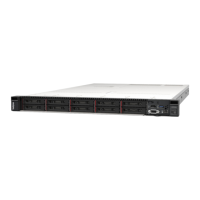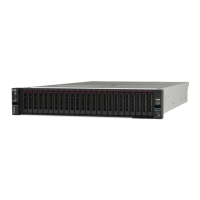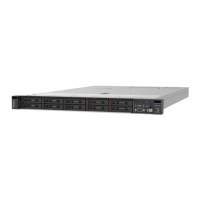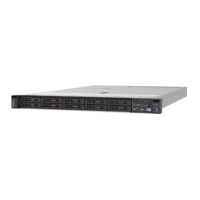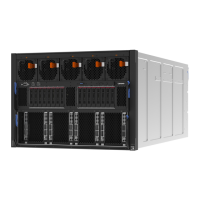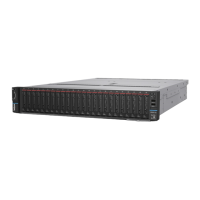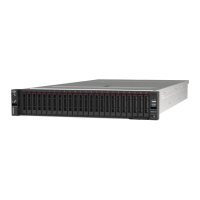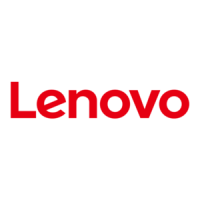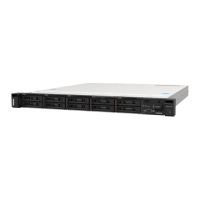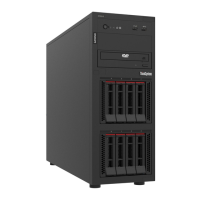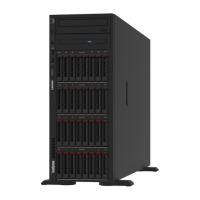Attention:
• Read
“Installation Guidelines” on page 47 and “Safety inspection checklist” on page 48 to ensure that you
work safely.
• Power off the server and peripheral devices and disconnect the power cords and all external cables. See
“Power off the server” on page 62.
• Prevent exposure to static electricity, which might lead to system halt and loss of data, by keeping static-
sensitive components in their static-protective packages until installation, and handling these devices with
an electrostatic-discharge wrist strap or other grounding system.
• Before you remove or make changes to drives, drive controllers (including controllers that are integrated
on the system board assembly), drive backplanes or drive cables, back up all important data that is stored
on drives.
• Before you remove any component of a RAID array (drive, RAID card, etc.), back up all RAID configuration
information.
Procedure
Step 1. Make preparation for the task.
a. If the server is installed in a rack, slide the server out on its rack slide rails to gain access to the
top cover, or remove the server from the rack. See “Remove the server from rack” on page 63.
b. Remove the top cover. See
“Remove the top cover” on page 277.
c. Remove the system fan cage. See
“Remove the system fan cage” on page 269.
d. Record the cable connections for cables from or crossing over the adapter; then, disconnect
all the cables.
Notes:
• If you need to disconnect cables from the system board assembly, disengage all latches or
release tabs on cable connectors first. Failing to release the tab before removing the cables
will damage the cable sockets on the system board assembly. Any damage to the cable
sockets might require replacing the processor board or system I/O board.
• The connectors on your system board assembly might look different from those in the
illustration, but the removal procedure is the same.
1. Press the release tab to release the connector.
2. Disengage the connector from the cable socket.
136
ThinkSystem SR665 V3 User Guide

